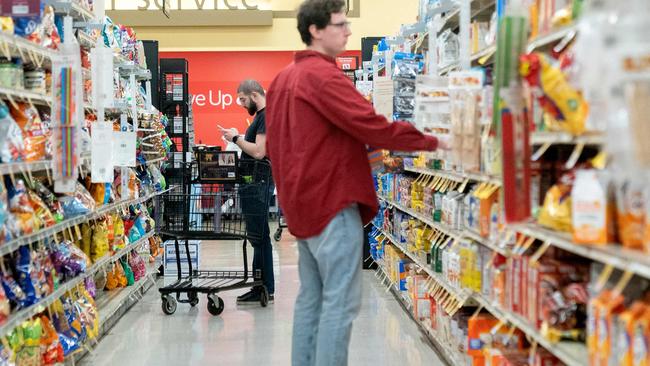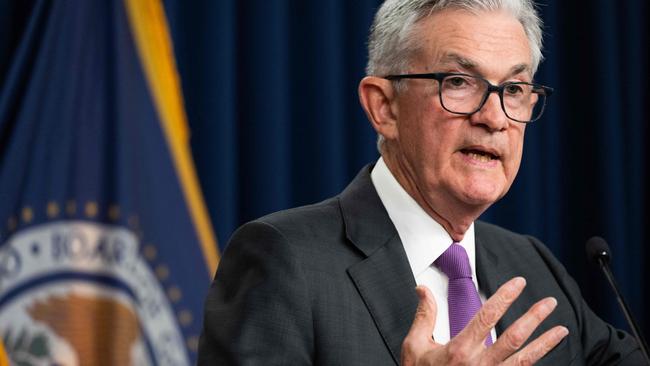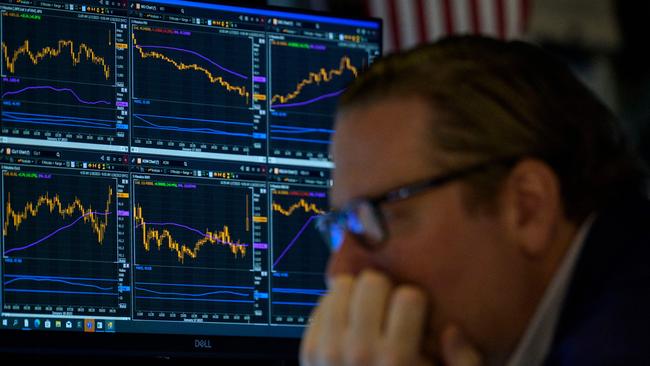Cooler US inflation opens door to pause on rates
US price pressures continued cooling in July, with annual inflation ticking up to 3.2 per cent and the US Fed-watched core prices slipping to 4.7 per cent.

Price pressures continued cooling last month, fresh inflation figures showed, likely deterring the US Federal Reserve from raising interest rates at its September meeting.
The consumer-price index, a measure of goods and services prices across the economy, rose a mild 0.2 per cent in July, the same as in June, the US Labor Department said. Core prices, which exclude volatile food and energy categories, also increased just 0.2 per cent in both months, extending a broader slowdown in price pressures.
The figures led to 3.2 per cent annual inflation in July, up from 3 per cent in June. Annual core inflation ticked down to 4.7 per cent in July from June’s 4.8 per cent.
The pick-up in annual inflation was influenced by what happened in July of 2022, which serves as the basis for comparison. Economists don’t expect the annual rate of inflation to slow much more this year in part because of so-called base effects.
US stocks rose following the positive inflation news, but a more than expected rise in weekly jobless claims wiped out most of the optimism. Bond yields held mostly steady.
Fed officials focus on core inflation because they see it as a better predictor of future inflation than the overall inflation rate.
The core CPI, in particular, adds to recent data that calls into question whether the central bank will need to raise rates again this year, as most officials had projected in June.
The new numbers lowered the three-month annualised rate of core inflation to 3.1 per cent, the lowest such reading in two years, from 5 per cent in May.

“My God, that’s incredible,” said Laurence Meyer, a former Fed governor. “There’s absolutely no question that core inflation has turned the corner faster” than the Fed anticipated.
Before the report, a handful of Fed officials said the central bank could be close to pausing interest-rate increases after raising them at 11 of the past 12 central bank meetings.
The Fed raised rates most recently last month to a range between 5.25 per cent and 5.5 per cent, a 22-year high.
In June, most officials projected they would raise rates at least to a range between 5.5 per cent and 5.75 per cent this year, but inflation has slowed markedly in the two months since they made those projections. Their next meeting is September 19-20.
“I believe we may be at the point where we can be patient and hold rates steady,” said Philadelphia Fed president Patrick Harker said in a speech on Tuesday.
Boston Fed President Susan Collins said she also thought a pause could be appropriate soon. “My read of the data that we have so far is that we are near or perhaps at a sufficiently restrictive level of monetary policy to hold for some time,” she said in a Monday interview.
Others have said it is still too soon to tell whether the central bank will need to raise rates again. Signs of a potential reacceleration in demand indicate the Fed might have to raise rates again, Richmond Fed President Tom Barkin said in Monday interview.
“I don’t want to declare a reacceleration too quickly [or] declare inflation settling too quickly,” Barkin said.

Prices for housing rose 0.4 per cent in July from the prior month, the same increase as June, and accounted for more than 90 per cent of the overall CPI increase, according to the Labor Department.
Slowing price increases for housing, including rent, can take time to show up in inflation data because of measurement lags. Housing inflation has cooled from earlier this year, a trend that should continue in coming months, which would put downward pressure on core inflation, said Kathy Bostjancic, chief economist at Nationwide Mutual.
Prices for used cars dropped 1.3 per cent in July from June, continuing a reversal from a large surge during the economy’s rebound from the Covid-19 pandemic. Such declines could also help ease core inflation going forward, economists said.
Americans got a break on summer travel expenses with hotel and flight prices declining in July from June.
Restaurant and bar prices rose modestly last month. Auto-insurance prices jumped for the month, amid a move up in rates this year.
Meanwhile, energy prices rose by a slight 0.1 per cent in July, but could put upward pressure on inflation in coming months. The average US price of a gallon of regular unleaded fuel climbed gradually in July to $US3.76 at the end of the month from roughly $US3.54 at the start, according to OPIS, an energy-data and analytics provider.
Because the CPI is essentially based on average prices over the month, that recent move up in fuel prices is likely to have more of an impact on August’s inflation data, economists said.
– The Wall Street Journal




To join the conversation, please log in. Don't have an account? Register
Join the conversation, you are commenting as Logout